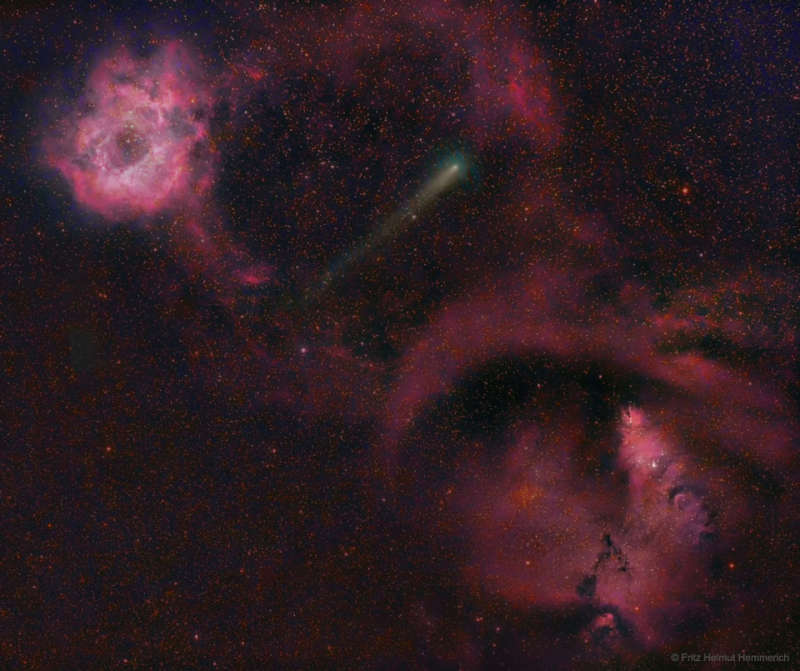
|
Credit & Copyright: Fritz Helmut Hemmerich
Explanation:
Small bits of this greenish-gray comet are expected to streak across Earth's atmosphere
tonight.
Specifically, debris from the
eroding nucleus of
Comet 21P / Giacobini-Zinner, pictured,
causes the annual Draconids meteor shower, which peaks this evening.
Draconid meteors are easy to enjoy this year because meteor rates will likely
peak soon after sunset with the
Moon's glare nearly absent.
Patience may be needed, though, as last month's
passing of 21P near the Earth's orbit is
not expected to increase the Draconids' normal meteor rate this year of
(only) a few meteors per hour.
Then again, meteor rates are notoriously hard to predict, and
the Draconids were quite impressive in
1933, 1946, and 2011.
Featured, Comet 21P gracefully posed between the
Rosette (upper left) and
Cone (lower right)
nebulas two weeks ago before
heading back out to near the orbit of
Jupiter, to return again in about
six and a half years.
|
January February March April May June July August September October November December |
| ||||||||||||||||||||||||||||||||||||||||||||||||
NASA Web Site Statements, Warnings, and Disclaimers
NASA Official: Jay Norris. Specific rights apply.
A service of: LHEA at NASA / GSFC
& Michigan Tech. U.
Based on Astronomy Picture
Of the Day
Publications with keywords: comet - Cone nebula - Rosette Nebula
Publications with words: comet - Cone nebula - Rosette Nebula
See also:
- APOD: 2025 December 1 Á 3I ATLAS: Tails of an Interstellar Comet
- APOD: 2025 November 25 Á Comet Lemmon and the Milky Way
- 3I/ATLAS: A View from Planet Earth
- APOD: 2025 November 17 Á Comet Lemmons Wandering Tail
- APOD: 2025 September 30 Á Comet Lemmon Brightens
- APOD: 2025 September 29 Á Two Camera Comets in One Sky
- APOD: 2025 September 26 Á A SWAN an ATLAS and Mars
